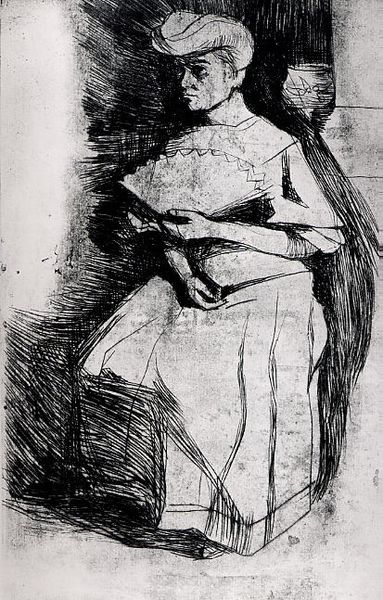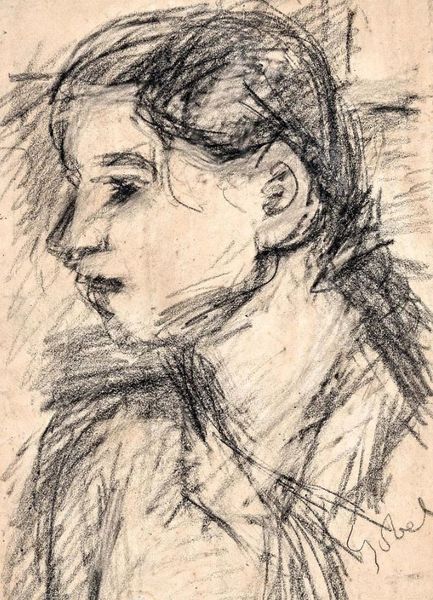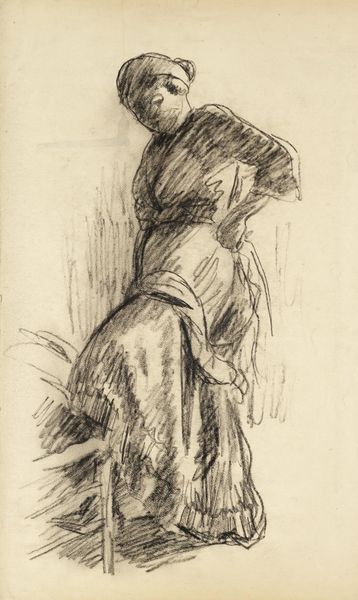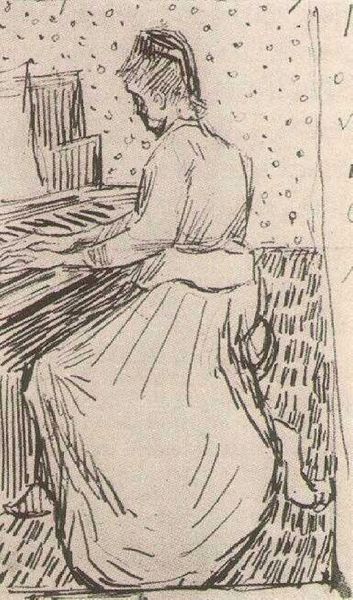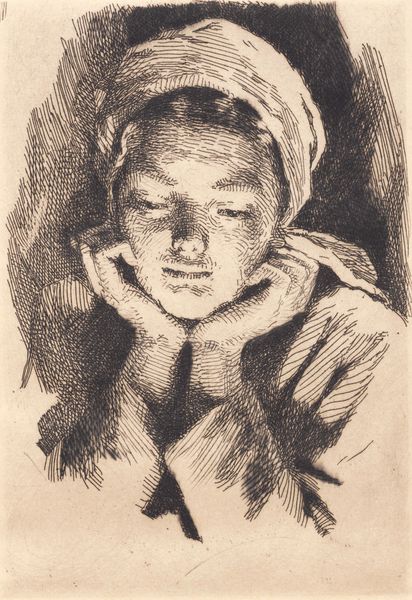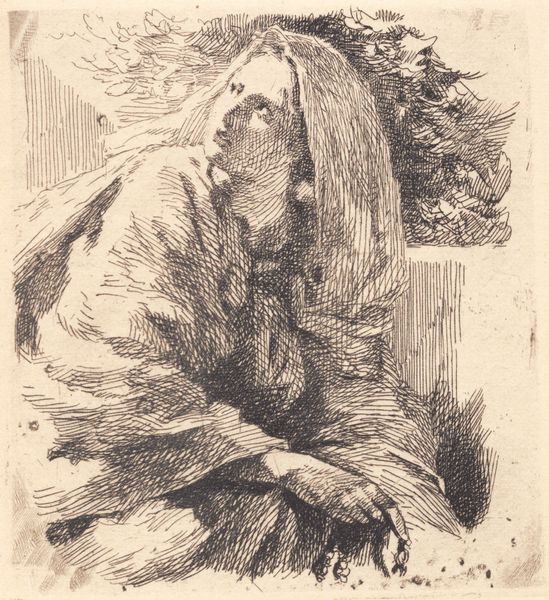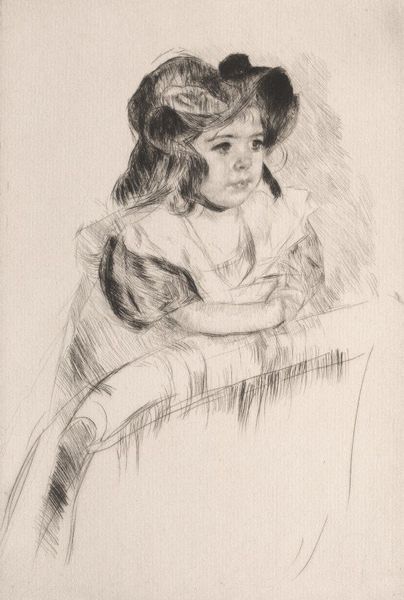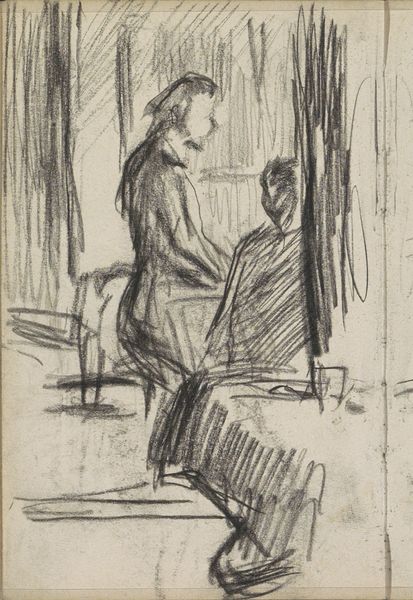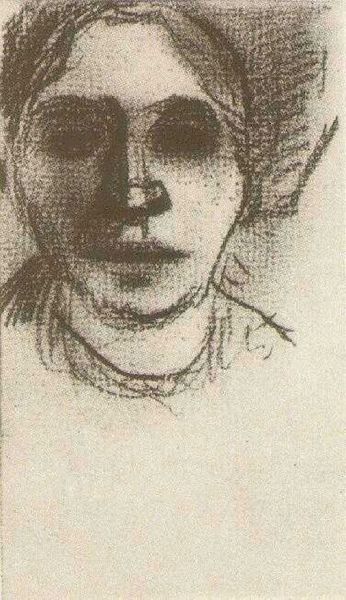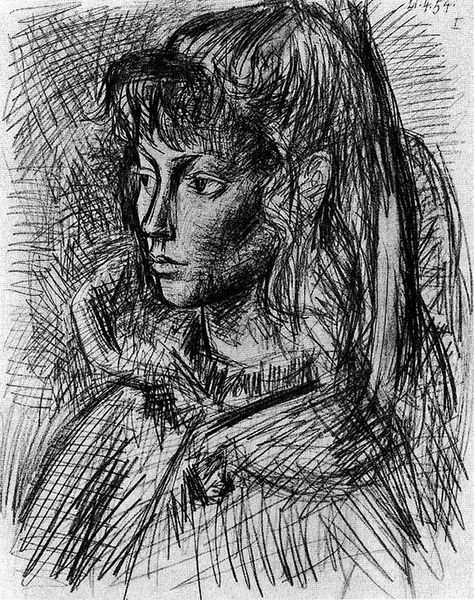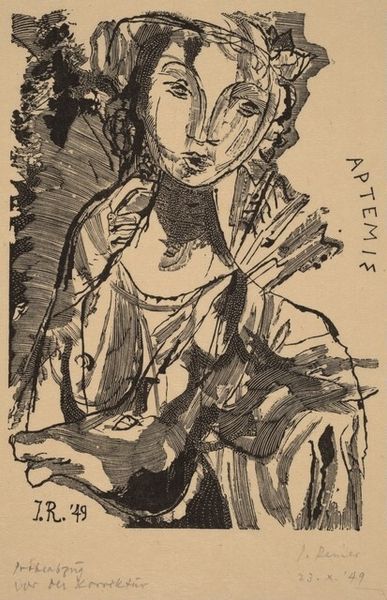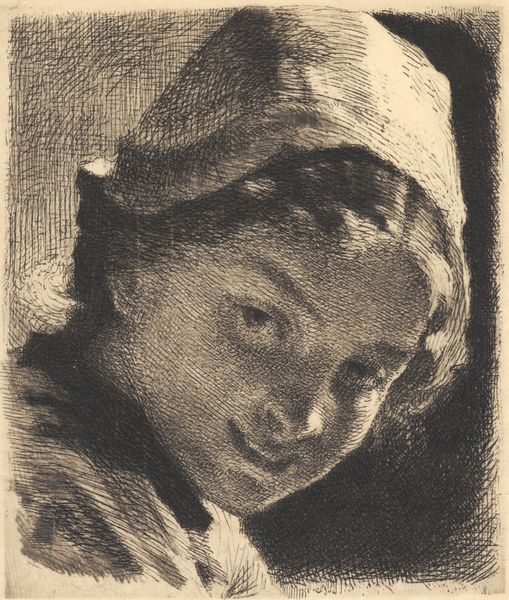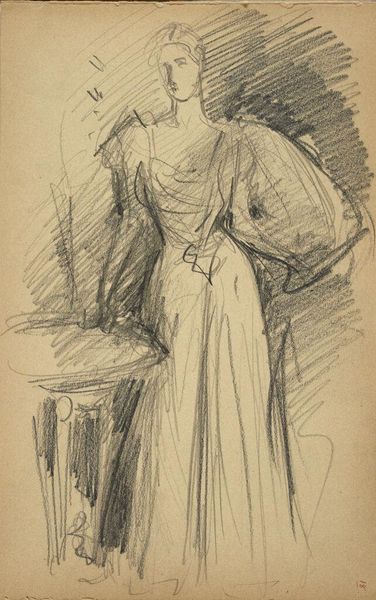
#
portrait
#
amateur sketch
#
thin stroke sketch
#
pen sketch
#
pencil sketch
#
incomplete sketchy
#
child
#
hand drawn
#
pen-ink sketch
#
pen work
#
sketchbook drawing
#
initial sketch
Copyright: Public domain
Curator: Looking at Van Gogh's sketch "Baby" from 1883, I'm immediately struck by its rawness. The stark black ink on what looks like simple paper creates a somber mood. What's your first take? Editor: The heavy lines certainly evoke a feeling of solemnity, and even perhaps social commentary. We're seeing a representation of childhood, but it is one stripped of the common associations of innocence and joy. It seems burdened. Curator: Absolutely. Van Gogh, during this period, was deeply invested in depicting the lives of peasants and the working class. It makes me wonder about the accessibility of art supplies for someone dedicated to such subjects. Was the choice of pen and ink one of economic necessity or conscious artistic choice? What was he aiming to depict, and how did it impact viewers of the day? Editor: That's a brilliant question. Think about the position of children in working-class families at this time: often contributors to the household income, rather than just dependents. Van Gogh’s choice to focus on this figure within that broader socioeconomic context speaks to the vulnerability of the working-class child and potentially exposes the systems that exploit them. Curator: The rapid, almost frantic, linework also tells us a lot about Van Gogh's process, right? He doesn’t seem interested in smooth blending or academic precision here. Editor: Precisely! There's a compelling lack of polish, underscoring its immediacy. And what do we make of the setting: the backdrop almost reads as prison bars. Is that a comment on the subject's environment or circumstance? Curator: It’s difficult to ignore those visual parallels! Considering his later development and the significance of place and person in his oeuvre, seeing this level of potential critical awareness so early is fascinating. Editor: Agreed. It reframes our understanding and, frankly, makes the image even more poignant when placed against the background of burgeoning modernism. Curator: Considering his well-documented later works, this early focus truly underlines the roots of his profound engagement with difficult societal topics and, above all, reminds us how much art can reveal about both maker and subject. Editor: Definitely. We often frame his mental health as a singular facet of understanding him, but his activism and empathy—demonstrated through this piece—shouldn’t be diminished. It offers a deeper, more nuanced reading of a master artist.
Comments
No comments
Be the first to comment and join the conversation on the ultimate creative platform.
